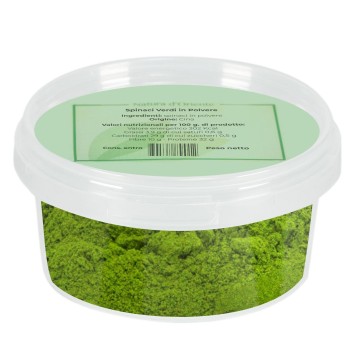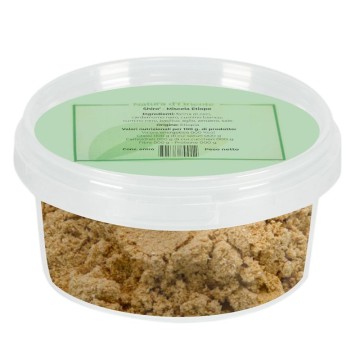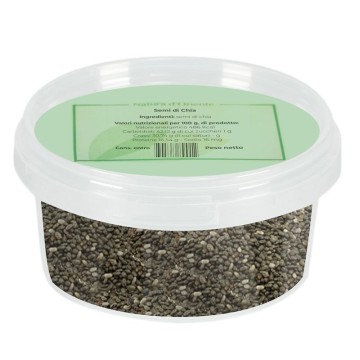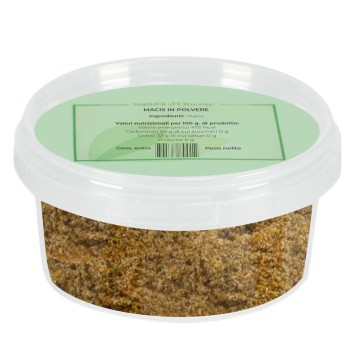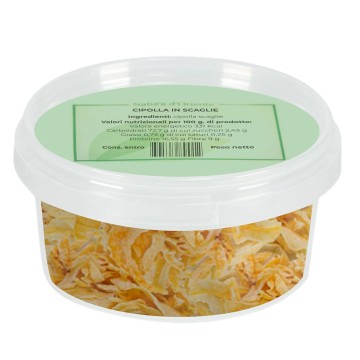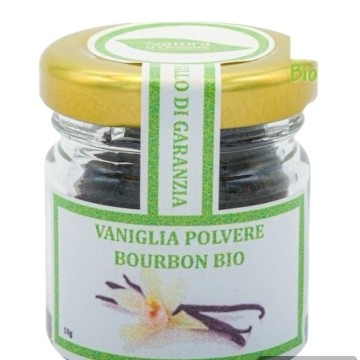For those who want to enrich their recipes with an exotic touch, this form of liquid sesame (creamy / buttery) allows you to try a delicious and versatile Middle Eastern condiment. A slightly nutty flavor and a creamy consistency perfect for savory and sweet recipes. Tahini is a thick cream, obtained from ground sesame seeds. Being rich in oil, which constitutes about half of their weight, the cream is a natural source of vegetable fats, as well as containing various other nutrients.
Tahina: properties and benefits
There are two types of tahini: shelled and unhulled. In the first, the outer shells of the sesame seeds are removed, so it becomes lighter and creamier than the unhulled one. Tahini contains whole sesame seeds (not hulled) and has a slightly more bitter taste. Our tahini is made from 100% pure sesame, with seeds peeled (husked), toasted and ground according to the original recipe.
As a plant food it is appreciated for the presence of calcium, minerals and Omega-3 and Omega-6 fats. The light version of sesame cream, which appears like real butter, with a taste reminiscent of toasted walnuts. The aroma resembles that of peanuts, and tahini is often used as a substitute for peanut butter in cooking.
How to use tahini in the kitchen
Our version of tahini is made from 100% pure sesame, and is perfect as the main ingredient in traditional hummus. It is also used as a flavoring and thickening agent for other sauces and condiments, and can also be used in desserts. It is an excellent condiment for meats, salads, vegetables and is much appreciated in appetizers. In Middle Eastern and Mediterranean cuisine, it is used to create spreads and sauces for felafel; in addition to traditional hummus, baba ghanoush is famous, a cream based on aubergine pulp. You can add a spoonful to pureed carrots or beets for a vegetable hummus. Tahini gives a notable and pleasant walnut or hazelnut flavor to all these specialties.
If you dilute the tahini with water and add lemon juice and minced garlic you can create a savory sauce useful for seasoning dishes such as roasted vegetables, grilled meats, or as an ingredient for a barbecue sauce. In oriental cuisine it is a typical accompanying sauce for vegetables and meatballs, and spreadable on bread - particularly on the typical flat and soft bread, pita. Excellent on focaccias, local piadina and toasted bread.
It is also possible to use it blended as a base for the vinaigrette, added to the emulsion of oil and white wine vinegar. Its consistency gives the illusion of a cream-based dressing for dipping bread, vegetables and other foods. You can also add soy sauce for a different flavor than usual.
To create a sweet effect, you can mix tahini with honey, with or without cinnamon. You will get a plant-based cream to enjoy on croissants, donuts or muffins. You can also use it in baking cookies or other desserts. Just blend a spoonful of tahini to get its taste even in smoothies or oat flakes. It can also create a contrasting and pleasant flavor on fresh fruit salad or ice cream, especially if blended with honey and diluted with water to obtain the right consistency.
We could say that tahini is the Middle Eastern answer to peanut butter, and in many cases it can replace it in the kitchen. Furthermore, the use of tahini to replace butter in some sweet recipes is becoming widespread in vegan cuisine. Mix the tahini well before using it, because during storage the oil often separates from the creamy part. You may need to stir the oil into the sesame paste. It can be kept in the fridge for a long time, but you need to be careful if the oil has gone rancid over time, so it is a good idea to taste and check before incorporating it into a recipe.
Origins and history of cultivation
Tahina has been produced for centuries in the Mediterranean, Middle East and North Africa, using sesame seeds. Many Middle Eastern cuisines use it as a condiment, like our "salt and pepper", using tahini as a flavoring agent at the table. Its name is usually written tahin or tahini, as well as tahina, and derives from the ancient Arabic verb tahana, which means to grind. The act of crushing or grinding also gave this word the meaning of flour. Historically, the ancient Egyptians already used the ground seed as flour about 2,000 years ago, and the seeds were used by the Chinese at least 5,000 years ago. The Romans grindedno sesame seeds with cumin creating a spread, used on bread. Even today in Europe and North America the seeds are used to flavor bread and other baked products. Sesame oil is also used in the production of cosmetics, pharmaceuticals and lubricants. Furthermore, in ancient times it was thought that the plant had magical powers, as evidenced by the expression "open sesame", from the tale of the Arabian Nights (it symbolizes the growth and opening of the pod, to open a closed cave).
Plant and seeds
Sesame has the botanical name Sesamum indicum L. and represents a herbaceous plant of the Pedaliaceae family. The plant is native to Africa, and today grows in the tropical, subtropical and southern temperate regions of the planet. Sesame varieties grow from about 0.5 to 2.5 meters tall, and show branches or not, depending on growing conditions. They display one to three flowers, and the seed capsules open when dry, allowing the seed to disperse. Sesame seeds are small and creamy white in color. They can be eaten whole or ground, and are popular in pastry and baked goods recipes. In some countries, sesame oil is used in cooking.
Nutritional values of tahini
Grinding the sesame makes the nutritional abundance of this seed into tahini. It retains many of the nutritional values of the seeds, offering unsaturated essential fatty acids and proteins. It is a source of calcium and mineral salts such as magnesium and iron. It also contains some vitamins, fiber and carbohydrates. Tahini contains a high number of calories, given its nutritional richness, approximately 683 calories per 100 grams.
Tahina: side effects and contraindications
Reactions are possible in subjects predisposed to sesame allergy, while for other people a moderate use of tahini is recommended. The cream is very caloric, so it should be consumed in doses that do not exceed 1-2 teaspoons per day, if spread on bread or eaten at the table. Excessive intake of thaina can have laxative effects.


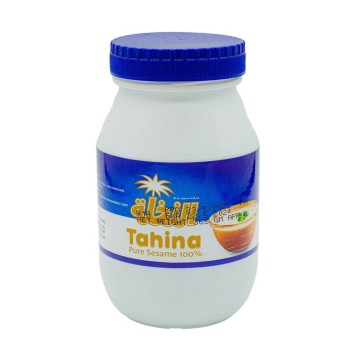
 No reward points for this product.
No reward points for this product.
